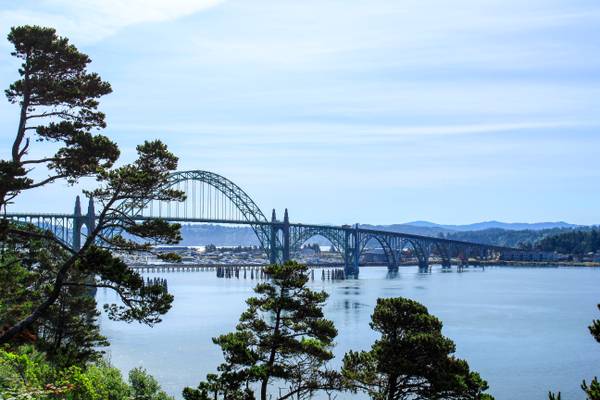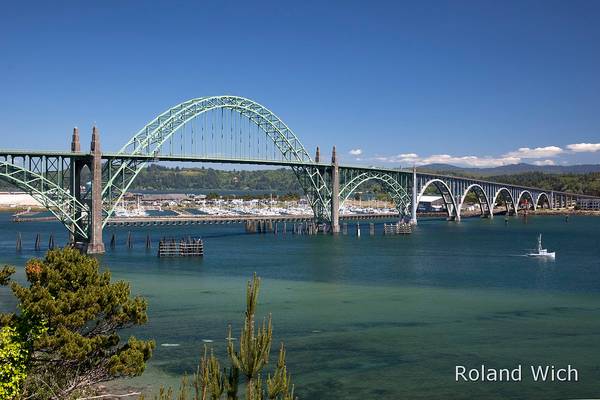United States » Oregon »
Newport - Yaquina Bay Bridge

0
The Yaquina Bay Bridge is an arch bridge that spans Yaquina Bay south of Newport, Oregon. It is one of the most recognizable of the U.S. Route 101 bridges designed by Conde McCullough. The Yaquina Bay Bridge is one of eleven major bridges on the Oregon Coast Highway designed by McCullough. It superseded the last ferry crossing on the highway.
Work on the Yaquina Bay Bridge began on August 1, 1934. The main arch was built in toward the center from the anchorages, using tiebacks to support the arch until it could be closed. The piers are supported by timber pilings driven to a depth of about 70 feet (21 m) below sea level. The project received funding from the Public Works Administration.
The bridge uses Art Deco and Art Moderne design motifs as well as forms borrowed from Gothic architecture. The Gothic influence is seen in the balustrade, which features small pointed arches, and in the arches of the side span piers. The ends of the bridge are augmented by pedestrian plazas that afford a view of the bridge and provide access to the parks at the landings by stairways. Pedestals were provided for proposed sculptures of seals, but the statues were never executed.
